Lets ease the burden by explaining some of the lingo commonly used by rock climbers.
Here are the basic climbing terms to get you going, in alphabetical order:
1.
Anchor
A equipment that attaches the rope to the climbing surface such as rock or ice.

Its that point where the rope supporting the climber is attached to the climbing surface for safety.
The anchor gear may consist ofbolts, slings, ropes, chains, and so forth.
Approach
The way or path to the foot of the climb where the actual climb commences.
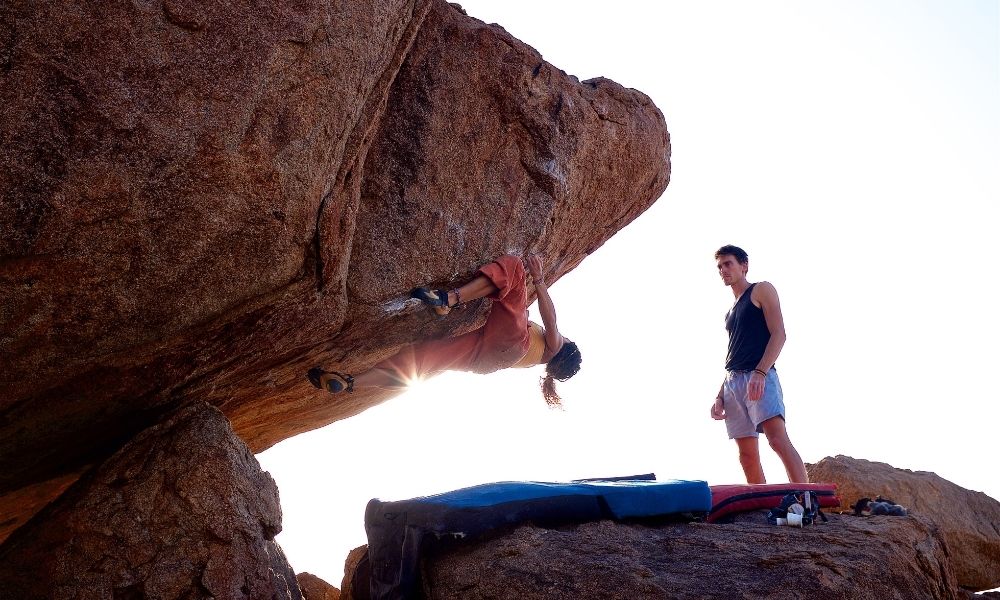
Could be a walk, run, or a scramble to the climb.
Auto-lock
A system that automatically locks securely without the need to lock it up manually.
Refers tocarabinersthat have this safety feature that allows them to lock on their own after theyve been opened.
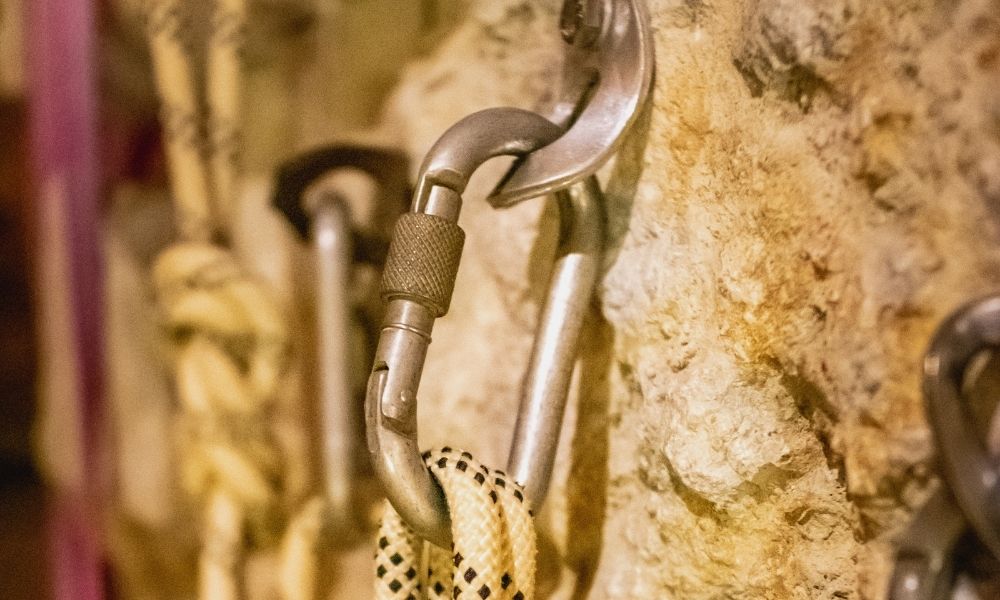
Bouldering
Bouldering is the simplest and most common form of climbing.
Here, no ropes are used.
Youll needshoes, chalk, andcrash padsfor safety.
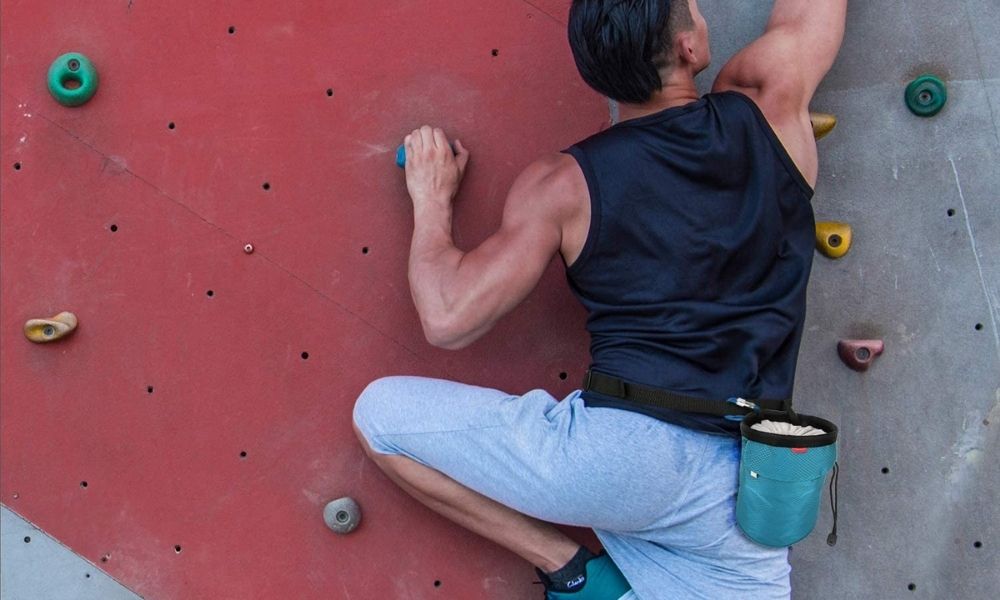
It typically involves climbing at the base of hills or on boulders.
Whereas rope climbing tests your endurance, bouldering is a test of power and overall fitness.
Its all about making tough maneuvers over short routes.
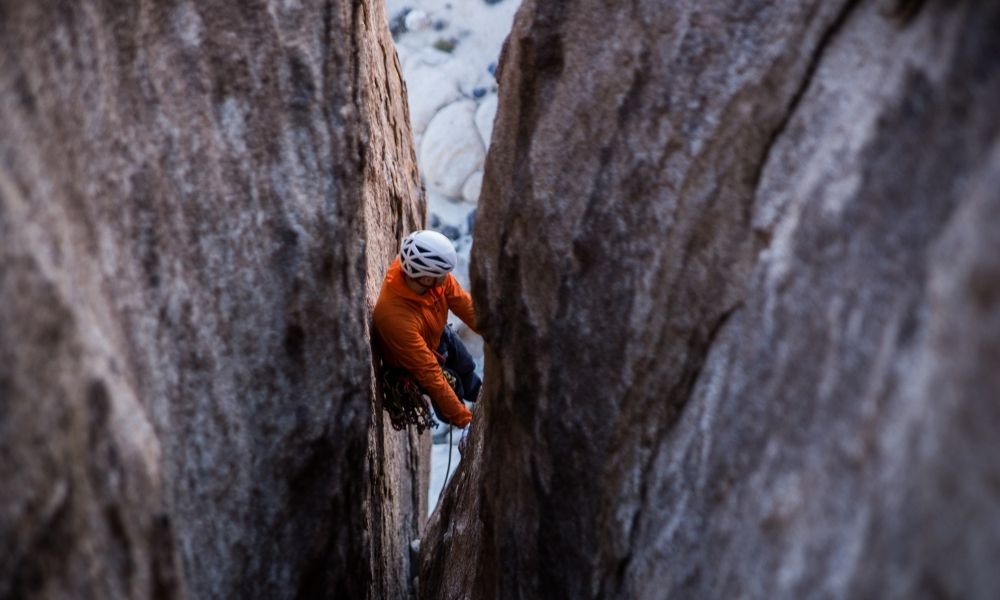
Its placed below the boulder to cushion against injury in case of a fall.
Belay
Belaying is a technique climbers use to secure the rope as a teammate climbs.
Youll need ananchor, a rope, a belay machine, and a belayer to deploy a belay system.
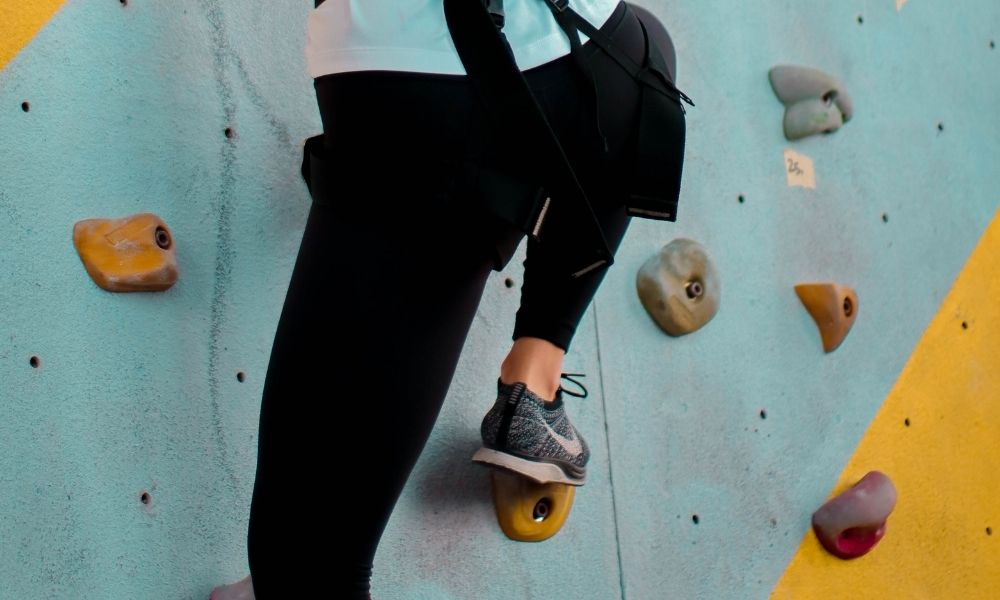
A belay unit limits the distance a climber could fall off a rock face.
It works by locking the rope to catch a falling climber.
When the climber loses footing, the body begins to swing much like a barn door.

If not careful on overhanging terrain, the barn door effect can lead to a fall.
Bolt
A permanentlyanchoredmetal thats been drilled into the rock for safety, primarily found onsport climbingroutes.
They offer extreme protection as they consist of self-anchoring bolts that expand in the rock.
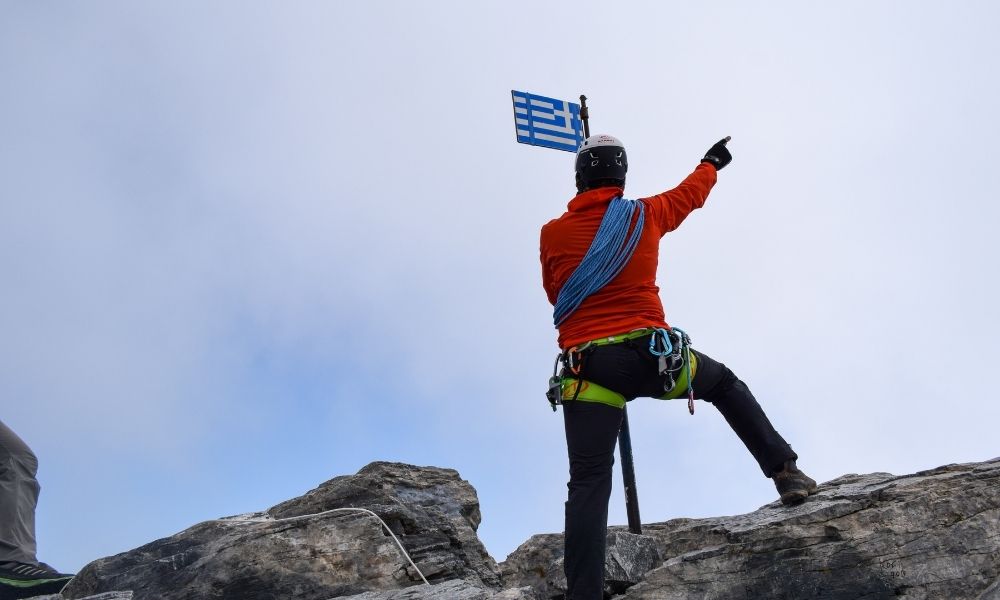
A climber clipsquickdrawsto the bolts and passes a rope through the anchor for support.
The bolts provide anchorage for clipping inquickdrawsthat in turn have a climbing rope clipped to them.
Bomb-proof
A route considered to be highly safe due to the presence of one or more crucialanchors.
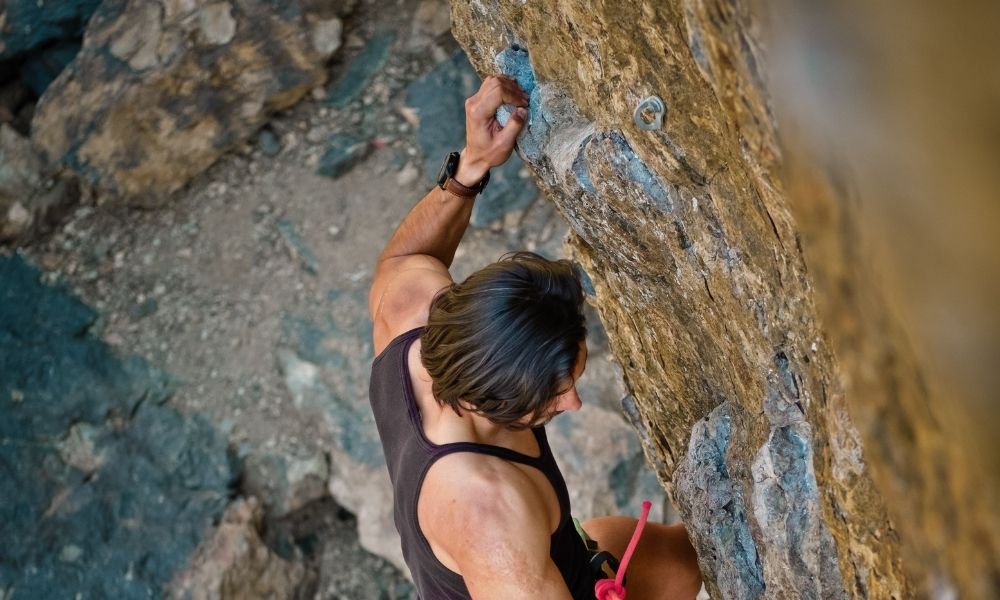
Cam
A spring-loaded mechanical gear that offersprotectionto climbers.
Carabiner
A piece of metal that acts as a linking gadget that connects yourropeandprotectionequipment to hardware in the wall.
Chalk Bag
A small bag in which you place climbing chalk to improve the grip on your hands.
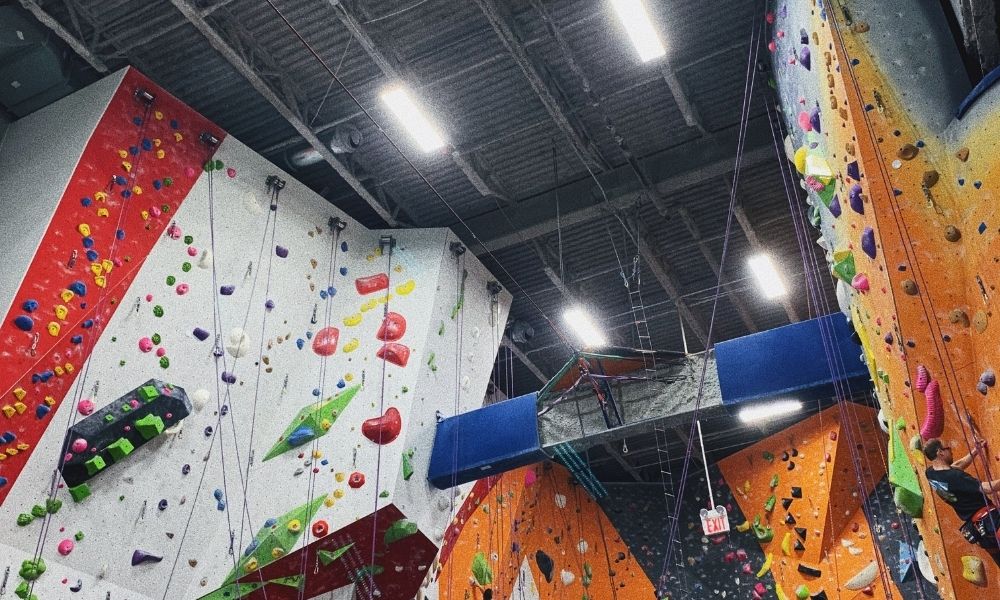
Chalk keeps hands dry and increases friction for a better grasp.
A chalk bag is worn on the waist belt or clipped to a climbing harness.
Chimney
Fissures found on rock walls that are sufficiently wide to fit your body into.
Clean
The act of removing all the protection that wasanchoredonto the route by the lead climber.
The climber behind the lead climber cleans the routes they ascend or on their way back down.
Crag
The term refers to an outdoor area where climbing takes place.
It could be a small cliff or aboulder.
Crimp
Refers both to a punch in of hold, as well as the grip required for the hold.
Crimp holds are typically extremely narrow and thin.
Crux
The most challenging section of a climb.
It can manifest anywhere along the climbing route.
Dynamic Rope
An elastic rope made from a special material for climbing purposes.
The elasticity is what makes the rope dynamic.
By stretching out slightly it takes in some of the impacts whenever a climber falls.
Dyno
A leap of faith of sorts where the climber moves dynamically between two surfaces.
Allows you to grasp overhanging terrain as you push up.
Figure of 8 Knot
A figure of 8 knot is simple to make but highly secure.
It secures the climber and tightens as it takes the weight of the climber.
Knot forms a shape resembling the number 8.
Jamming may be uncomfortable to the limbs, but sometimes its the only feasible way up during crack climbing.
However, the gear does not directly aid the climber move up the object.
Types of free climbing includesport climbing, top-roping, andtrad climbing.
In each of these, the climber uses gear that offersprotectionbut does not aid the climber with their climbing.
Free Soloing
One of the most common mistakes climbing newbies make is confusingfree climbingwith solo climbing.
Solo climbing can be free or aided.
Its generally considered quite dangerous, and not recommended for anyone who isnt 110% confident in their abilities.
The water will provide a safer, softer landing during such an eventuality.
Alex HonnoldandDean Potter, are a few of those whove made for themselves a name on this dangerous terrain.
Performed palms out, thumbs down.
Named after Gaston Rebuffat, French climber, alpinist, and author.
Harness
A robust belt attached to the rope and gives protection as you climb.
The harness features a strong buckle and leg loops.
Once worn, climbers tie themselves to the rope with afigure 8 knot.
Besides climbers,belayersalso need to put on a harness.
Jug
A sizable handhold thats easy to grip.
This is every climbers best friend, as it allows firm, confident grips.
Lead Climbing
In this climbing technique, one person leads the pack of climbers on a route.
They lead by placing gear on the climbing surface intrad climbing, or by hooking onto permanently fixedboltsinsport climbing.
Multipitch
Multipitch is a route that requires more than the length of one rope.
The lead climber gets to the top of thepitchandbelaysthe follower to his position.
The rope is then used to move upwards to a second pitch.
The leader moves up,anchorsat the top of the second pitch, and belays the follower.
If only one climber is involved in a multipitch, theyll climb to the end of the first pitch.
They will then pull up the rope to their midway position and initiate another pitch.
Theyll do this successively until they reset the route.
Passive protection
Passive protection is any climbing protection equipment with no moving parts.
Pitch
A route a climber can cover with the length of a single climbing rope.
A hollow rock or hole that so tiny, only a finger or two can fit in.
Protection
Devices that minimize the dangers one is prone to while climbing.
Also provides protection to others while you ascend.
Examples include items such asbolts, nylon webbing, andcams.
Quickdraw
Quickdraws are also known as extenders.
Theyre used by lead climbers to link the rope toprotectiondevices by clipping it to aboltor protection.
It consists of twocarabinersattached by a reinforced textile sling.
Runout
Describes the distance between a climber and theirprotectiongear (such asbolts).
Send
Youll mostly hear climbers use the word sending.
To send means you climb through the entire route without taking a rest from start to finish.
Sport Climbing
Rock climbing featuring permanently fixedprotectiondevices that are affixed to the rock for safety during ascent.
Usually consists of permanently drilled-inbolts.
You createprotectionwith your gear as you climb and remove it all once thepitchis done.
Trad climbing limits damage to the environment as the gear is removed after the route has been completed.
Final Word
These terms may seem too many and overwhelming especially if youre a beginner.
But dont fret, youll master each of them step by step as you continue interacting with other climbers.